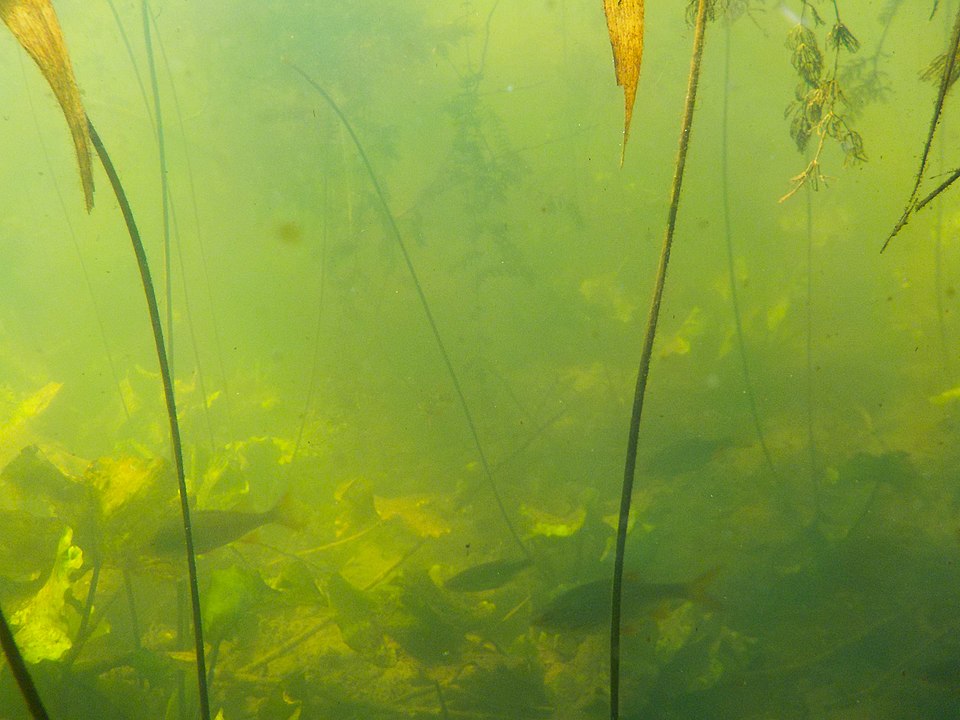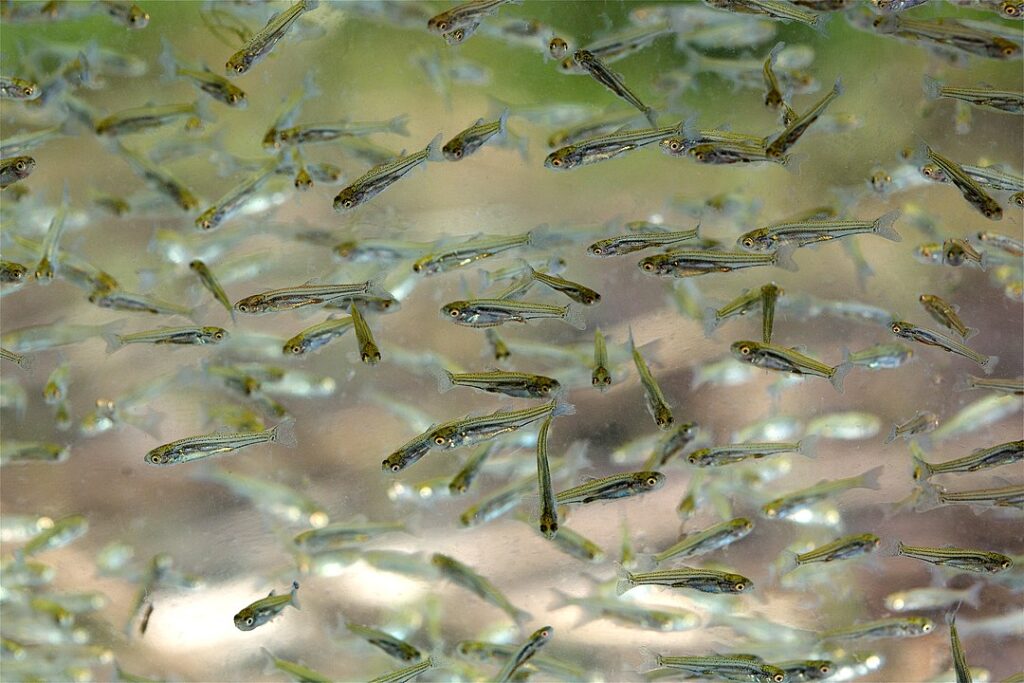Common Roach
Rutilus rutilus

One of the most common fish in Sweden
The common roach is one of the most abundant fish species in Sweden. It belongs to the carp family, which is the world’s largest family of fish with more than 3,000 species around the world. Like other carp fish, the common roach has no teeth in its mouth, but instead has teeth in its throat that can break the shells of mussels and freshwater snails that it eats. The common roach eats most things, from small zooplankton and algae, to worms, larvae, and small fish. It can be found almost all over the country, both in fresh and brackish water along the coast.

Photo: Ullrich-Muhlhoff-CC-BY-SA
Doesn’t thrive in acidic water
The common roach does not thrive in acidic conditions, which is why it is unable to survive in acidified lakes and streams, or in naturally acidic waters. When acidified streams have been limed, the roach has been able to rebound. In contrast, it has a high tolerance to eutrophication (over-fertilisation) or biological pollutants – which is why the roach has flourished in many places with eutrophication problems.

Photo: Dariusz-Kowalczyk-CC-BY-SA
Mates among the vegetation
Spawning season for the common roach occurs in the spring when the temperature of the water is around 10 degrees. At this time, large numbers of roach gather in fairly shallow depths, splashing violently in the water. Several males may force a female into the aquatic vegetation and fertilise her eggs. The female lays up to 200,000 sticky little eggs that attach to plants and rocks. The eggs hatch after a few days and up to two weeks, and the fry spend their first time on the bottom before gathering in large shoals, protected by underwater vegetation.

Photo: Tiit-Hunt-CC-BY-SA
Distribution in Sweden
The whole country except the mountain region.

Threat based on the Red List

Trade regulations
CITES: Not listed.